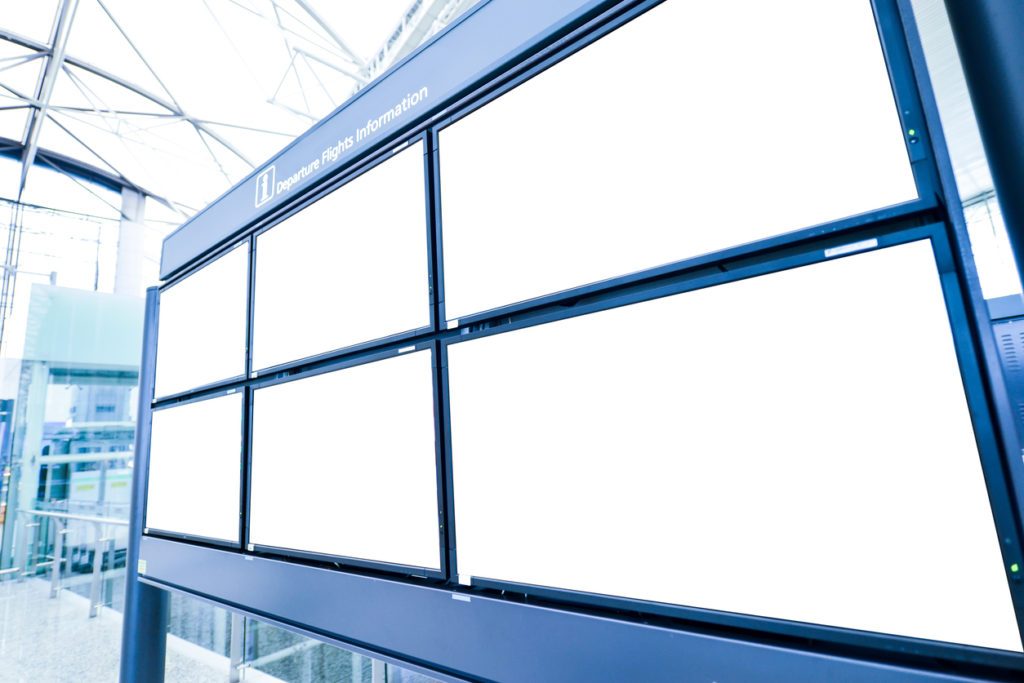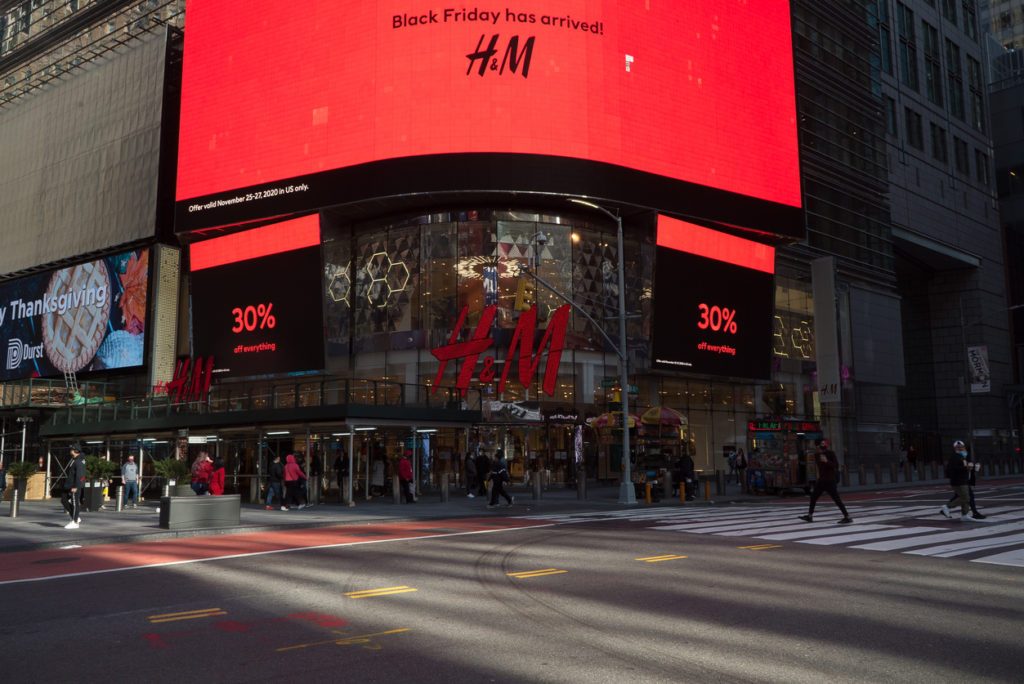5 Reasons To Switch To Digital Signage
If you’ve seen vibrant digital signs in malls, airports, restaurants, and retailers, like Walmart and Tesco, you have witnessed the increasing popularity of digital signage. Traditionally, businesses have used stickers, flyers, print billboards, vinyl lettering, decorative stands, and other static signs to advertise and inform customers. However, these signs posed various problems for advertisers. For example, banners need to be changed if products were added or services were changed. This proved to be expensive and time-consuming.

In contrast, a digital signage system can deliver colorful content to multiple locations. What’s more, store managers can change the content in real-time and broadcast personalized messages. Additionally, digital signs attract 400% more views compared to static signs.
Part of the popularity of digital signage is attributed to the reduced costs of TV screens and the availability of high-resolution LED and LCD screens. Today, even small business owners can install digital signage solutions to improve in-store promotions.
Advantages of Digital Signage
1. Remote Management
Digital signage remote management facilitates the maintenance of digital displays. Once you install digital signage devices, you need to supervise their functionality and control the published content. However, it is impractical to visit every signage location, especially if you manage a large digital signage ecosystem in multiple locations.
Thankfully, you can publish content, update software, and check device performance from anywhere via a cloud-based system. You can log into the dashboard as long as there is an internet connection. Then, you can view or edit live content to make it more personalized, relevant, and timely.
Remote management offers unparalleled convenience for modern marketers. In fact, making content updates is as easy as updating your Facebook or changing TV channels with a remote. Further, you can schedule marketing messages. For instance, restaurants’ digital signs can automatically advertise happy hour specials at 4 PM every day. Thus, you can relax wherever you are, knowing that you are using digital signs to their full potential.
Centralized control is another outstanding advantage of digital signage remote management. It is essential for businesses with multiple locations to harmonize their marketing efforts. Fortunately, you can enroll and control many devices from a single dashboard and view what other team members are doing.
2. Cost Savings
Previously, the costs of setting up a digital signage system were out of reach for many small businesses. However, the prices of display hardware have significantly gone down. Moreover, most digital signage providers offer subscription model pricing structures, where you pay for what you use. Businesses of any size or industry can adopt digital signage solutions. Technology contributes to cost savings, thanks to advantages like:

- Eliminate Paper
Single-use posters can be pretty expensive in the long run as you need to print new banners for every campaign. Indeed, businesses that regularly print new posters, such as real estate agencies and restaurants, spend a lot of money on printing materials. Recurring payments to graphic designers and printing companies can eat into your profits. In contrast, you only install your digital signage system once and play content for years to come. Furthermore, you eliminate the distribution costs of getting banners to multiple locations.
- Economies of Scale
You can deploy digital signage for various uses, including wayfinding, event information, product details, videos, and weather data. In comparison, you need hundreds of posters to deliver diverse information across your business.
3. Easy Update/Fixes
Traditionally, businesses had to print new posters every time there were product or service changes. Businesses needed to consult a graphic designer and other third parties, leading to long lead times. As a result, restaurants and other brick-and-mortar stores lost opportunities to promote discounts and specials. Moreover, static signs make it harder to respond to feedback and customer requests.
In comparison, you can update digital signs from your smartphone, tablet, or computer. For example, restaurants can make quick changes to digital menus to highlight unavailable items or specials. Also, you can encourage customers to order larger items for cost savings before they complete an order at drive-thru kiosks. Similarly, retailers can run flash sales before the arrival of a new batch of inventory.
Since it is easy to update digital signs, you can broadcast real-time and relevant content. For example, airport displays can show weather data, flight times, and delays. Similarly, schools and colleges can update timetables and classroom changes in real-time.
Most digital signage software feature templates that you can quickly customize to fit your company’s brand. Additionally, there are user-friendly apps that can create content for you. Further, employees without an IT background can refresh and publish content. Digital signage makes it easy to keep your audience informed and entertained by enabling real-time updates.
4. Greater Recall/Retention
Digital displays are striking and attractive, and people easily recall the content they saw on them. Specifically, digital signage boasts a recall rate of 83%, which is nearly double the retention rate for traditional signage. Also, visual content attracts 94% more views as compared to text-based messages. Interactive boards have even higher engagement and recall, and you can use them to create unique customer experiences.
Digital signage’s high recall rate makes it great at promoting products and services and increasing sales. Additionally, you can encourage customers to take specific actions, like making a purchase, following your social media profiles, placing an order, or talking about your store to friends. Additionally, retailers can highlight upcoming events or sales. In environments where people wait for long periods, such as hospitals, digital displays can reduce the perceived waiting time.
5. Flexible

Digital signage provides limited digital possibilities as you can edit your visuals quickly. All industries can benefit from the capabilities of this technology. For instance, digital signs in hotels can broadcast wayfinding information, promote sister facilities, and advertise local cuisines. Property managers can showcase interactive maps and advertise different properties. There are several types of digital solutions:
- Video Walls
Video walls are common in stadiums and airports as they are excellent at grabbing attention. While a video wall may look like a large screen, it is actually a group of screens arranged together to create a large display. You can configure the screens to show one image or display different content on every screen.
The uses of video walls are limitless. For instance, retailers can switch between multiple small images and large pictures in storefront video walls. In airports, video walls display status reports and flight times. Additionally, these displays enhance the aesthetics of any commercial space.
- Interactive Digital Kiosks
If you want to provide interactive experiences to visitors, interactive digital kiosks are perfect solutions. These freestanding kiosks can include sensors, cameras, and microphones to improve user experience and gather environmental data. Moreover, interactive kiosks deliver helpful information that gets visitors on their way.
Museums, transportation hubs, and smart cities can install interactive displays to engage tourists, promote attractions, and advertise local events. Similarly, retail stores can offer product information and payment solutions.
- Digital Wayfinding Directories
When visitors step into your facility, they get frustrated if they cannot find what they want. Frustrated visitors may be unwilling to revisit your property. Fortunately, digital directories at your facility’s entrance and in other strategic locations like lobbies and near elevators can guide visitors. Also, wayfinding directories can incorporate an organization’s branding to boost customer loyalty.
Interactive wayfinding directories improve your patrons’ navigational experience and eliminate confusion. For example, visitors can establish a route to their destination in a touchscreen map and send it to their mobile devices.
Wrapping Up: A Promising Future

Digital signage has helped businesses communicate with visitors and employees more effectively in an age where customers are increasingly glued to vibrant screens. Indeed, modern customers are attracted to companies with modern communication, and businesses without digital signage lag behind their competitors.
Digital signage has powerful advantages for companies, including reduced printing costs, improved employee satisfaction, and enhanced customer engagement. Further, innovative technologies like Artificial intelligence, live streaming, facial recognition, high-resolution displays, and interactivity make digital signs smarter, more exciting, and more efficient. Thus, your business needs to be part of the digital signage revolution to stay ahead of the curve.



